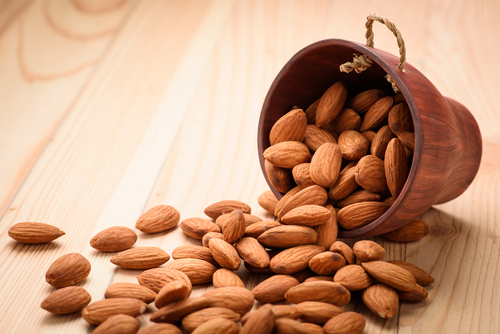If you are over the age of 50, chances are you are paying a lot more attention now to how much calcium you eat than you did in your 20s, 30s or even 40s. That’s because as we age, our risk for developing osteoporosis increases.
Osteoporosis, which means “porous bones”, is a disease that causes the bones to gradually thin and weaken. This leaves people susceptible to bone fractures. Roughly 2 million fractures occur each year due to osteoporosis.
Although all of the bones in your body can be affected by osteoporosis, the disease usually impacts the spine, hips and wrists the most. In the elderly, hip fractures can be particularly dangerous because immobility during the healing process can lead to blood clots and pneumonia, both of which can be fatal.
Now, you most likely know that to keep your bones nice and strong, you need to make sure you get enough calcium each day. In fact, the recommended daily intake (RDI) of calcium is 1,000 mg per day for most adults, though women over 50 and everyone over 70 should get 1,200 mg per day.
But do you know which foods are the best sources of calcium? Keep reading to find out.
1. Dairy Products
Let’s start with the most obvious source of calcium right up top, and that’s dairy products. Most cheeses are fantastic sources of calcium, but parmesan has the most, with 331 mg (33% of the RDI) per ounce. Softer cheeses typically have less calcium. For instance, brie only delivers 52 mg (5% of RDI) while medium-hard cheeses fall somewhere in the middle, providing roughly 20% of RDI.
As an added bonus, many aged, hard cheeses are naturally low in lactose, making them easy for people with lactose intolerance to digest.
Yogurt is also an excellent source of calcium. Just one cup of plain yogurt contains 245 grams (30% RDI) of calcium. Plus, yogurt also provides beneficial probiotic bacteria that can help improve your gut health, and therefore, overall health.
And finally, milk is probably one of the absolute best and cheapest sources of calcium. Just one cup of cow’s milk contains 276–352 mg, depending on whether it’s whole or nonfat milk. Additionally, milk is a wonderful source of vitamin A and vitamin D.
In general, dairy products are the absolute best sources of calcium. Not only do they offer a high percentage of RDI, but your body also has a far easier time absorbing the calcium in dairy products than it does from plant sources. Plus, dairy is loaded with protein, something else older people need to make sure they are getting enough of.
But perhaps the best added benefits of eating more dairy that you may not be aware of, is the fact that it may lower your risk of heart disease and lower your risk for developing metabolic syndrome, which increases your risk of heart disease, stroke and type 2 diabetes.
Just keep in mind that full fat dairy, while a healthy option, does contain more calories, so don’t go hog-wild!
2. Some Seeds
Seeds are often referred to as tiny nutritional powerhouses because they are loaded with important nutrients, including calcium. But not all seeds are equal on the calcium front, so choose poppy, sesame, celery and chia seeds.
One tablespoon of poppy seeds contains 126 mg (13% RDI) of calcium. These seeds also deliver some protein and healthy fats as well.
3. Sardines and Canned Salmon
Thanks to their edible bones, sardines and salmon are loaded with calcium. For instance, a 3.75-ounce can of sardines boasts 35% of the RDI, and 3 ounces of canned salmon with bones have 21%.
Plus, these oily fish also provide a high-quality source of protein and omega-3 fatty acids. And, as if those weren’t enough benefits, both fish also offer high levels of selenium, an important mineral that is a powerful antioxidant.
4. Beans and Lentils
You probably know that beans and lentils are a great source of protein and fiber. But did you know that certain varieties are also high in calcium? Winged beans, for instance, offer 244 mg of calcium in a single cup of cooked beans. A cooked cup of white beans provides 13% of RDI.
In addition, some studies suggest beans may help lower “bad” LDL cholesterol levels and reduce your risk of type 2 diabetes.
5. Almonds
While many nuts contain calcium, almonds offer the most, containing 8% of RDI for roughly a 22-nut serving. Almonds also provide protein, healthy fats, fiber, manganese and vitamin E.
Now that you know how to keep your bones healthy, what about your joints? While strong bones are necessary for an active lifestyle, the pain and stiffness of arthritis often keeps older people from enjoying life to the fullest.
Keeping your bones AND your joints healthy as you age is vitally important for your physical health as well as your mental health and well-being. If you suffer from painful and swollen joints, it’s time to do something about it RIGHT NOW!
Take a few moments to watch the following video. You will learn from one doctor how he cured his arthritis FOR GOOD.
No more pain.
No more stiffness.
No more relying on medications just to have less pain throughout the day.
 Validating...
Validating... 





1 Comment